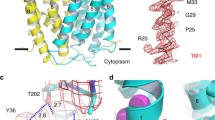Abstract
Structure/functional studies previously reported showed that in a series of simple organic cations in which the charge is delocalized, an aromatic ring and a minimal degree of lipophilicity (log P > −1) were required for recognition by murine cells which express P-glycoprotein (p-gp)-mediated multidrug resistance (MDR). In the present report we find that 3H-octylpyridinium, the simple aromatic cation which has been shown to be preferentially toxic to MDR− as compared to MDR+ cells, accumulates 4.7-fold greater in the MDR− cell line. In contrast, we find that 3H-guanidinium which displays no selective toxicity between MDR+ and MDR− cells, shows no significant uptake differences between these two cell types. We also present data which demonstrate that other organic cations which contain aromatic rings, a minimal degree of lipophilicity (log P> −1) and carry a delocalized (Rho 123) or shielded (triphenylmethyl phosphonium) positive charge, also accumulate to a greater degree in MDR− vs MDR+ cells. Additionally, we find that human cells which express p-gp MDR, have similar requirements for recognition of these simple compounds. In fact, the sensitivity profiles of these compounds closely correlate between murine and human cell lines. It was also found that none of the series of simple organic compounds tested showed modulatory activity in MDR+ cells, as assayed by monitoring retention of Rho 123. Thus, the requirements for MDR recognition vs those for MDR modulation are clearly distinguished with these simple structured compounds. In comparison, the calcium channel antagonist, verapamil, and a calcium channel agonist, Bay K 8644, both showed modulatory activity by increasing Rho 123 retention in MDR+ cells, further supporting the interpretation that verapamil’s modulation of MDR is unrelated to its action on calcium flux. Overall, the data presented here add further information for defining the structural requirements of compounds for their recognition by, or modulation of, human cells expressing p-gp-mediated MDR
Similar content being viewed by others
Author information
Authors and Affiliations
Rights and permissions
About this article
Cite this article
Lampidis, T., Shi, YF., Calderon, C. et al. Accumulation of simple organic cations correlates with differential cytotoxicity in multidrug-resistant and -sensitive human and rodent cells. Leukemia 11, 1156–1159 (1997). https://doi.org/10.1038/sj.leu.2400700
Received:
Accepted:
Issue Date:
DOI: https://doi.org/10.1038/sj.leu.2400700
- Springer Nature Limited
Keywords
This article is cited by
-
To use MIBI or not to use MIBI? That is the question when assessing tumour cells
European Journal of Nuclear Medicine and Molecular Imaging (2005)



